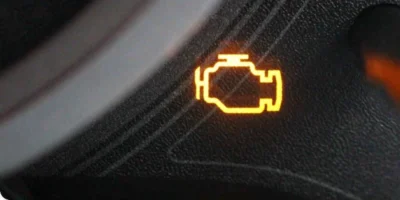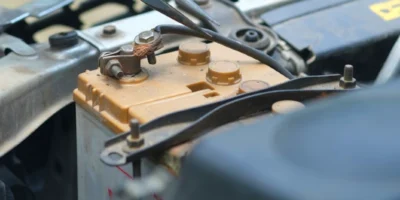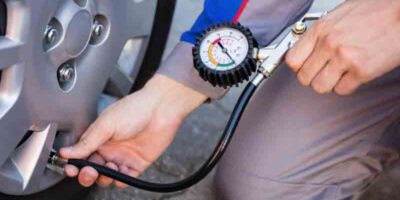There is friction at every braking maneuver, and where there is friction there is also wear, which means eventually you have to change a car’s brake fluid. This is because, in order to ensure the safety of the passenger and other road users, regular maintenance and service of the entire braking system is required. This also includes an exchange of brake fluid. This is often underestimated by vehicle owners. Here you will learn everything about why and how often you should change a car’s brake fluid.
Why do you need brake fluid?
When a car driver brakes, hydraulic pressure is exerted on the wheel brakes, the vehicle slows down and comes to a halt. The brake fluid has the task to transfer the power from the pedal to the brakes. At the same time it also acts as a lubricant for the individual components and moving parts within the braking system and prevents the formation of corrosion and rust.
Why do you need to change a car’s brake fluid
The brake fluid mainly consists of polyglycol compounds. Over time, however, it absorbs water, especially from the air and through the brake hoses. The result is a lower boiling temperature of the brake fluid, which affects the braking behavior: during braking, friction occurs, which in turn generates heat. The more water in the brake fluid system, the faster the boiling point is reached. This faster boiling results in a bubble formation, which in the worst case can lead to total failure of the brake system.
Thus, the braking power is severely limited, the car does not come to a correct stop and the braking distance is extended. This can be life-threatening, especially on the highway. To ensure that the brake fluid is as free of water as possible, you must adhere to a regular replacement interval.
How often should you change a car’s brake fluid?
In the automotive workshop, the mechanic has the opportunity to measure the water content of the brake fluid. If this is 3.5 percent, the so-called wet boiling point is reached and the liquid must be replaced. Have this value checked regularly, but at least once a year. One of the warning lights indicates problems with the brake. When the red exclamation point lights up in a circle, it is high time to change the brake fluid. At the same time, have the brake lines checked at the same time and if you also need to change the brake pads.
In addition, vehicle owners find in their manual exact manufacturer information on the specified replacement intervals. As a rule, these amount to 2 years. Be sure to comply with these periods. And: Different brake fluids have different dry and wet boiling points. According to the boiling point, they are divided into DOT classes. Not every fluid is suitable for every vehicle type. Most cars need DOT 3 or DOT 4. The correct one is in your vehicle manual.
By changing the brake fluid, you can also change the brake discs , which suffer particularly from the friction. Also, periodically drain the brake system via the bleeder valve and its bleed screw, especially if the brakes feel spongy and the pedal needs to be pushed further than normal.
Step by step to change a car’s brake fluid
The brake fluid should be changed every two years. At longer intervals it is likely that the water content in it will be too high.
- Before you replace the brake fluid, you must drain the system. For this you need a container that collects the old liquid, a wrench and a can of brake cleaner.
- First clean the container with the brake cleaner spray before opening it. (Caution: brake cleaner is usually very easy to inflame!)
- In the next step you have to drain the old liquid. You can work with either negative pressure or overpressure. In both cases you need a suitable device for this.
- If you have removed the old brake fluid, you must top up the cylinder with the new fluid. Make sure you have the right brake fluid for your car. This is classified according to the boiling point. Most cars have DOT 4 or DOT 5.1 brake fluids. Please check in advance which ones you need.
- After that you have to lift the car slightly. A jack is enough for it completely. So you can get individually to each brake. At this step, someone has to help you by pushing the brake a bit. When the pedal is depressed, the valves on each wheel open and drain the old brake fluid into the reservoir. As soon as your assistant pushes the pedal all the way to the floor, you should close the valve again, so that no unnecessary moisture can penetrate into the system.
Repeat this step for each wheel until the liquid is clear. You may need to refill the main tank several times. - If you have done this for each wheel, use the brake pedal to pump 20 or 30 times to increase the amount of fluid in the main reservoir.
- If the brake light comes on after completing the procedure, a quick and firm brake pedal depression should extinguish the light.
Be careful when handling and disposing of brake fluid
Brake fluid is toxic and must never come into contact with the skin or the eyes. Due to the corrosive effect of the paint can be damaged. In addition, it should never come into contact with other components in the engine compartment or the brake system – in some cases, this can damage the entire system. When draining the old liquid and venting it with a vacuum pump, it can also happen that air enters the system – with serious consequences for your safety. Even a tiny bubble can lead to total failure of the brakes.
What dangers can occur if the fluid is too old?
Worn brake fluid often has too high a water content. This can make it too hot and the braking force decreases. In addition, too high a water content leads to corrosion and rusting. This has the consequence that brake lines, brake pistons and brake cylinders can no longer fulfill their task and the braking power drops – up to the total failure of the brake.
How much brake fluid fits in a brake?
A rule of thumb is that you need 0.5 liters per wheel. Basically, it depends on how fast the liquid is clean, ie anhydrous. The mechanic taps on each wheel again and again parts of the newly filled liquid from to check the water content. After all, it is not just the liquid in the brake fluid reservoir that is changed, but also the remains that are in the other components such as cylinders and pipes. 2 liters or more per wheel are very rare.
Helps with too little brake fluid pumping with the brake pedal?
If you have the feeling that there is little pressure on the brake pedal or the accelerator pedal is too long until the braking effect finally occurs, this can have several causes. There may be air in the brake system, which may be the case, especially after a previous repair to the brake system or a change of brake fluid. If both are not correct, the brake fluid is probably old or the level in the brake fluid reservoir is too low. By pumping, so repeated pedaling of the brake pedal, the pressure in the brake system is increased and the symptoms mentioned disappear.
But attention: abnormalities in the brake system are always questionable and a case for the immediate use of a specialist!




